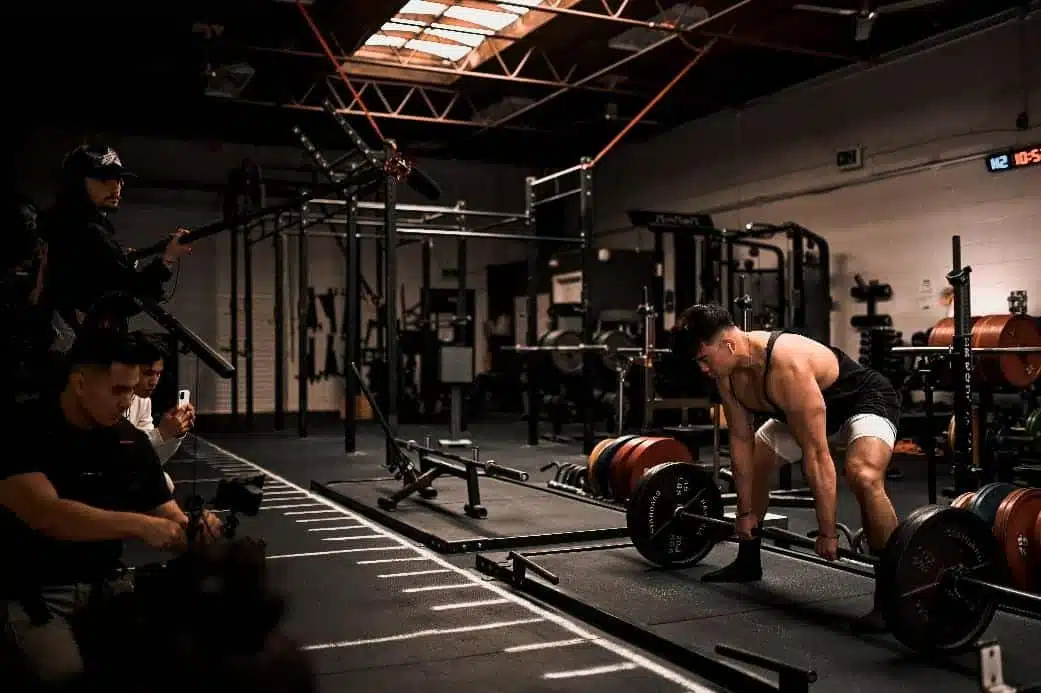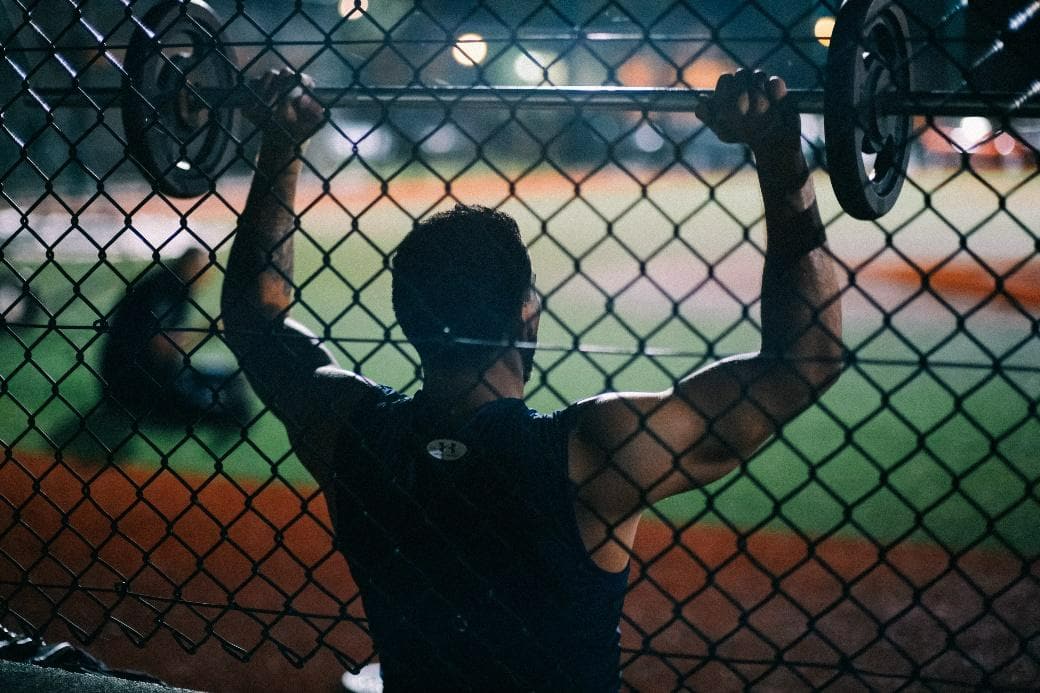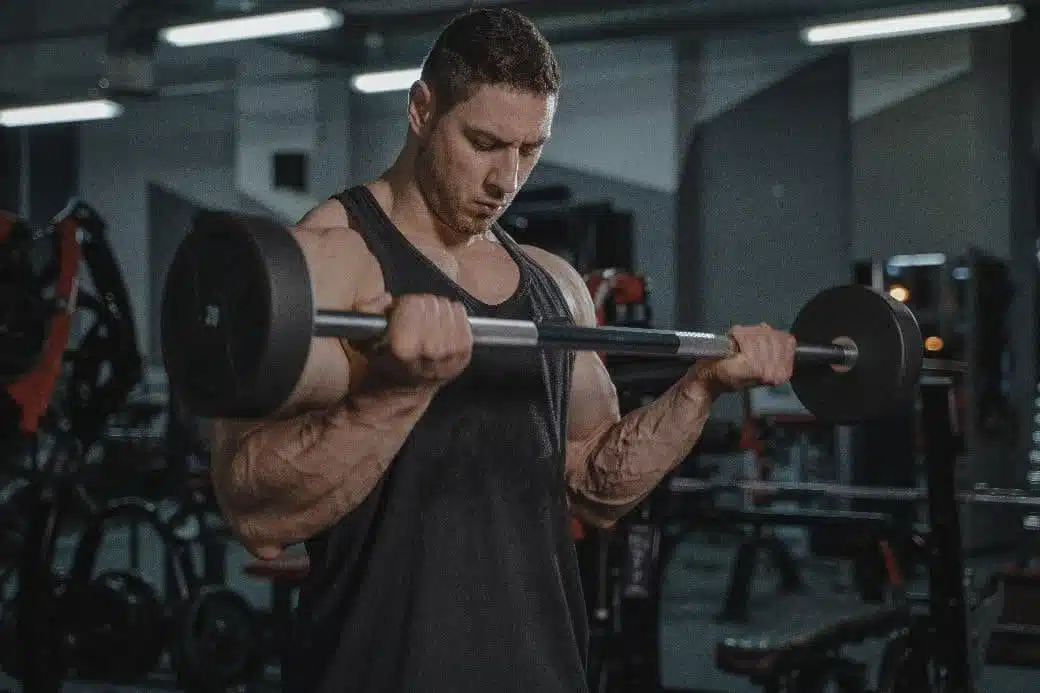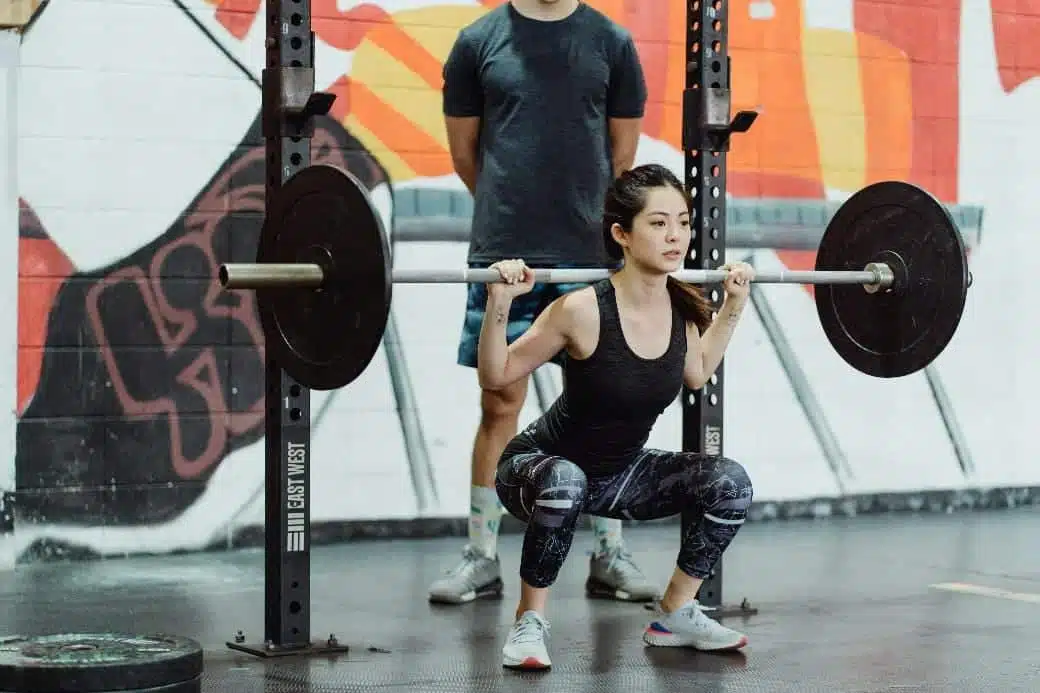6 de May de 2023
When to Use Dynamic Effort vs Repetition Method?
The Westside system, developed by Louie Simmons, differentiates three training methods: maximal effort, dynamic effort and repeated or repetition effort (Simmons, 2022). The difference between them is the load used, the velocity at which we move the bar and the fatigue reached, or how close we get to muscle failure. The ideal is not to use one or the other, but to complement them based on each sport discipline and the athlete’s own needs (Simmons, 2007).
In order to know when to use the dynamic effort vs. the repetition method, it is necessary to understand what each one consists of, and to see the objectives it pursues. Throughout this article, you can answer this question yourself, although at the end we will make a small summary and analysis to know when to use the dynamic effort vs. the repetition method.
Max Effort Training Method

The maximal effort training method uses heavy loads, usually above 90% of 1RM. The goal is to lift as much weight as possible, even if the velocity at which we move it is slow (Simmons, 2007). The velocity at which we move a load decrease as the load increases (Sánchez-Medina & González-Badillo, 2011). Although from the outside it may appear that the bar is moving slowly, the goal should always be to move it at the maximum intentional velocity. Below, we detail the objectives we achieved using the maximal effort training method.
Learning to Move Heavy Loads & Preparing Ourselves Mentally For It.
Depending on our sport discipline, it may be necessary to move extremely heavy loads. Sports such as powerlifting, strongman or weightlifting demand moving the load once or a few times, so the load moved will be the maximum we can lift. In these cases, the athlete must be mentally accustomed to getting under the bar in squats, since that sensation is only known to those who experience it. The method of maximum effort is fundamental in these cases since we will learn to fight against those maximum loads when the situation gets complicated.
Intramuscular Coordination When Moving Load
Lifting with maximal and near-maximal loads causes each of our muscles to coordinate all of their fibers to be able to move the load they are being subjected to (Bruhn et al., 2006). As we train the recruitment of motor units is increasing and they are recruited faster. This positive adaptation can become negative if we do not control the programming well with maximal efforts.
The bigger the Container, The More Space to Get it Filled
Coach Eric Cressey has a phrase that he often repeats, and that is that in a bigger glass you can fit more things (Cressey & Fitzgerald, 2008). Making the container bigger means improving our maximum, strength. If we are able to move 200 kg in bench press, we will be able to move without a great effort 100 kg. However, if we can only move 120 kg in bench press, when we do only three repetitions with 100 kg, we will be close to muscle failure. Therefore, the maximum effort training method is useful to be able to move submaximal loads more easily.
Dynamic Effort Training Method

The dynamic effort training method consists of moving submaximal loads at the highest possible velocity, i.e., we make a maximum effort lifting submaximal loads. This way of training has been described by authors such as Vladimir Zatsiorsky, with the aim of complementing dynamic effort training (Zatsiorsky & Kraemer, 2006). The aim of dynamic effort training is to eliminate the drawbacks of the maximal effort method, such as the psychological stress of undergoing remarkably high loads, or the need to have a perfectly polished technique.
Isaac Newton’s second law states that the force (F) exerted on an object is directly proportional to its mass (m) and acceleration (a). This gives rise to the well-known formula “F = m x a”. If we want to produce a high force, we can do it in two ways, either by increasing the mass or by accelerating it further. The maximum effort method of the previous section focuses on obtaining a high force by increasing the mass (m), i.e. the load on the bar. The dynamic effort method seeks to decrease that mass (m) in order to accelerate it as much as possible, resulting in equal or even higher levels of force.
Louie Simmons says that your body can only adapt to the stimulus you put into it. There is no better way to acclimate to a heavy load than to train with a heavy load (Simmons, 2022). Similarly, if our sport requires the fastest possible accelerations, we will have to train that quality to adapt to them, and that is achieved with dynamic effort.
More Power in Less Time
By moving submaximal weights at the highest possible velocity, the athlete improves acceleration more than by moving maximal loads at slower velocities. The goal of this method of dynamic effort is to apply force in less time, as most sports disciplines require hitting, throwing, changing direction… in milliseconds. Our athlete may be able to move a lot of weight in one repetition maximum, but if he is not able to apply that force in a short time, he will not see improvement in his sport if that is what he requires. For example, a boxer may be able to bench press 150 kilos, but what is really important is that he throws a ‘straight’ at maximum velocity.
Intramuscular Coordination Increase
Strength production depends on intramuscular coordination (fibers within a muscle) and intermuscular coordination (several muscle groups working together at the same time). When we pick up a glass to drink water, the biceps contracts to bring the hand to the mouth, and the triceps relax to make it happen. The dynamic effort method favors this coordination between muscles, since if there is no coordination, strength decreases as they are hindered by each other (Santos et al., 2021).
Improves Capacity of Repeating Efforts
The dynamic effort method improves the ability to repeat efforts over and over again during our competition. A basketball player can chain a jump to collect a defensive rebound with a jump to dunk at the opponent’s hoop. This ability is known as the Repeated Sprint Repeat Ability (RSA), and is vital in most sports (Dawson, 2012).
Repetition Training Method

The repeated effort or repetition method is the typical training used to develop muscular hypertrophy. It consists of performing an exercise with medium loads and many repetitions until reaching failure or staying close to it. It is used to complement the maximum effort and dynamic effort training methods, since one of the factors on which strength depends, to a certain extent, is the muscular cross-sectional area (Jones et al., 2008).
This method is used to:
- Increase muscle mass
- Attack weak points
- Give variety to weightlifting
- Improve muscular endurance
- Increase muscle mass
Each sport has its own needs, and the amount of muscle mass can be one of them. In basketball it is not enough to be agile and fast, but we must add muscle to be able to block with all the guarantees or move our opponent with our body. Weight is vital in many positions in American soccer or rugby, so much so that in the latter sport, the weight of the melee determines the success or failure in this formation. The method of repeated efforts is key to muscle growth and consequent success in some sports.
Attacking Weaknesses
Every athlete has some weaknesses that need to be honed to improve performance. A baseball pitcher may have a lot of room for improvement in his triceps strength production, so he will need to work this muscle group specifically. A soccer linebacker may need to improve his tackling, and pulling on the part of his biceps may be the problem, so he will focus on that with the repeated effort method. It is also particularly useful for stimulating ancillary muscle groups, such as shoulder rotator cuffs, or whatever else the athlete requires.
Variety in weightlifting
If we are field hockey or soccer players, our workouts will be very varied, both technically and physically. However, there are many disciplines that spend hours and hours in the weight rooms, and need to get out of the squat, bench press and deadlift. To give variety to these workouts, the method of repeated efforts uses a long list of exercises that we can perform, as they allow many repetitions with medium loads.
When to Use Each Method

When to Use Maximum Effort vs Dynamic Effort
Peak effort and dynamic effort are two remarkably similar methods that differ in the load lifted and the velocity with which it moves. Depending on the needs of our sport, the athlete will have to move along the force-velocity curve. Each sport has its own strength-velocity profile, so we will have to adjust the programming to match the athlete’s profile to the sport’s profile (Lindberg et al., 2021). If the athlete has maximal strength deficits, we will spend more time at maximal effort. If the athlete has a velocity deficit, we will use more dynamic effort.
If the athlete is balanced and fits the profile of the sport, we will use the maximal effort method to gain maximal strength, and we will use the dynamic effort method to get them to apply that gained strength in the shortest amount of time possible. Below, we can see listed the benefits of each method, so we will use one or the other depending on what we are looking for, although the ideal is to use both and that they complement each other.
The maximum effort method is used for:
- Learning to move heavy loads and mentally prepare ourselves for it.
- Intramuscular coordination to move the load.
- Making the vessel bigger to fit more things in.
- The dynamic effort method is used to:
- Produce force in less time
- Increase intermuscular coordination
- Improve the ability to repeat efforts
When to use Dynamic effort vs. Repetition method?
The dynamic effort method and the repetition method have quite a few differences that we have already seen throughout the article. Using one or the other will always depend on our sport and the athlete. A bodybuilder will focus almost 100% on the repetition method to increase his muscle mass, while a tennis player will base the vast majority of his sessions on the dynamic effort method. In the middle ground are the majority of athletes who need both methods for maximum performance.
Throughout the article we have seen what one method and the other consists of, so we already have a broad idea to answer the question of when to use the dynamic effort vs. the repetition method. To summarize what we accomplish with each, you can see listed the objectives of each method below.
The dynamic effort method is used to:
- Produce strength in less time
- Increase intermuscular coordination
- Improve the ability to repeat efforts
The repeated effort method is used to:
- Increase muscle mass
- Attack weak points
- Give variety to weightlifting
- Improve muscular endurance
Therefore, both methods complement each other perfectly and should be used at the same time, giving a greater or lesser load to one or the other depending on the needs of the athlete. Speaking of sports periodization in a few lines is overly complicated, but being reductionist we can train by blocks of work in which we focus on the dynamic effort method or on the repeated effort method, or we can train everything at the same time. In the first case the periodization is linear or by blocks, and in the second case we speak of undulated periodization.
In a linear periodization we will begin with an introductory or anatomical adaptation phase, in which we will use the method of repeated efforts. Little by little we will progress towards the method of maximum efforts, moving maximum and almost maximum loads, to increase the absolute strength that will then serve us in the following block, in which we will train with dynamic efforts, moving lower loads, but at maximum velocity. As the competition approaches, the method of repeated efforts is reduced and eliminated completely, leaving us with high intensity and low volume training.
In an undulatory periodization we mix all of the above. In the same week we can have two maximum effort sessions in which we work the basic movements with loads above 90%, and low velocities. We will have in that same week, even within the same day, dynamic effort work with lower loads, but maximum velocity. And we will also add volume with the repeated effort method to work on lagging muscles and weak points, and to gain quality muscle mass.
VBT Devices to Track our Training
The main difference between some methods and others is the load used, the number of repetitions and the velocity at which we execute the movement. There are velocity measuring devices, such as the Vitruve, which measure the velocity at which we move the load in each exercise. Thanks to this data, we will obtain instantaneous results from Newton’s formula ‘F = m x a’.
By entering the load (m) in the Vitruve application, we will obtain the force and power that we have developed in the movement, since the velocity meter will instantly calculate different parameters on velocity and acceleration. With the use of this device we achieve a double objective: firstly our athletes will move the loads faster by the simple fact of having real-time feedback; secondly, we will know if we are using the right loads, and if we are progressing. More coaches are using this type of velocity measurement devices, as they are essential in training, especially at a certain level.
Joaquín Vico Plaza
References
Bruhn, S., Kullmann, N., & Gollhofer, A. (2006). Combinatory effects of high-intensity-strength training and sensorimotor training on muscle strength. International Journal of Sports Medicine, 27(5), 401–406. https://doi.org/10.1055/S-2005-865750
Cressey, Eric., & Fitzgerald, Matt. (2008). Maximum strength : get your strongest body in 16 weeks with the ultimate weight-training program. 227. https://www.buscalibre.es/amp/libro-maximum-strengthget-your-strongest-body-in-16-weeks-with-the-ultimate-weight-training-program/9781600940576/p/1960136
Dawson, B. (2012). Repeated-sprint ability: where are we? International Journal of Sports Physiology and Performance, 7(3), 285–289. https://doi.org/10.1123/IJSPP.7.3.285
Jones, E. J., Bishop, P. A., Woods, A. K., & Green, J. M. (2008). Cross-sectional area and muscular strength: a brief review. Sports Medicine (Auckland, N.Z.), 38(12), 987–994. https://doi.org/10.2165/00007256-200838120-00003
Lindberg, K., Solberg, P., Bjørnsen, T., Helland, C., Rønnestad, B., Frank, M. T., Haugen, T., Østerås, S., Kristoffersen, M., Midttun, M., Sæland, F., & Paulsen, G. (2021). Force-velocity profiling in athletes: Reliability and agreement across methods. PloS One, 16(2). https://doi.org/10.1371/JOURNAL.PONE.0245791
Sánchez-Medina, L., & González-Badillo, J. J. (2011). Velocity loss as an indicator of neuromuscular fatigue during resistance training. Medicine and Science in Sports and Exercise, 43(9), 1725–1734. https://doi.org/10.1249/MSS.0B013E318213F880
Santos, P. D. G., Vaz, J. R., Correia, P. F., Valamatos, M. J., Veloso, A. P., & Pezarat-Correia, P. (2021). Intermuscular Coordination in the Power Clean Exercise: Comparison between Olympic Weightlifters and Untrained Individuals-A Preliminary Study. Sensors (Basel, Switzerland), 21(5), 1–16. https://doi.org/10.3390/S21051904
Simmons, L. (2007). The Westside Barbell Book of Methods. Power.
Simmons, L. (1947-2022). (n.d.). The conjugate method: enhanced through the research of Westside Barbell.
Zatsiorsky, V. M., & Kraemer, W. J. (2006). Science and practice of strength training.

